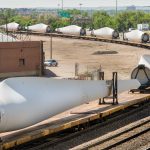No matter how much you pay for your home or car insurance, if your property is damaged by mouse plague, nuclear radiation, war or rising sea levels you are almost certainly on your own.
If you’re lucky, your insurance might cover you against storms but maybe not against floods (you know the difference, right?). Likewise, your insurance almost certainly doesn’t cover you against storm surges or a dam bursting.
Australians spend more than $10bn for non-life insurance products each year, even though there’s only a one in 500 chance your house will catch fire.
That’s why there’s so much profit to be made in insurance. If a forecaster says something’s likely to happen, then it’s highly unlikely you’ll be able to get insurance against it.
Insurance is like a lottery in reverse; lots of people lose a little bit of money paying for premiums they don’t claim against, a few people get a fair bit of money, and the insurer makes a lot of money for handing one group of people’s money to the other. As with gambling, the house always wins.
Which brings me back to mice, nuclear power stations and climate change.
There is a plague of mice rampaging from Queensland through northern New South Wales. Some farmers and small business owners have lost their entire income. So far the cost is estimated to be about $1bn but unless the mice eat through your wiring and burn your house down, insurance almost certainly won’t cover any losses.
While insurance companies make their profit out of our fear of an individual catastrophe, they would lose their entire business if they insured against society-wide catastrophe. We take it for granted that insurance companies will pay out if an accident hits our car or house but most people rarely think about what will happen if catastrophe hits us all at once. Which is why the small print on insurance premiums is so small.
The Fukushima nuclear disaster is likely to cost the Japanese government more than $500bn in damages and compensation simply because no private company would build a nuclear plant if it were liable for those costs, and no private insurance company would ever take on such a large risk. If there was an accident at Lucas Heights in Sydney, people would need to rely on government support as their insurance explicitly doesn’t cover the costs.
For the same reasons, a growing number of insurers are reluctant to insure Australians living in the tropics against storm damage.
Just as no bookmaker will take a $10bn bet on the flip of a coin, no insurance company will take a bet that nuclear power stations won’t have accidents or that sea levels aren’t going to rise in the next 50 years.
While you can still get cyclone insurance in northern Australia, the prices are rising rapidly as global temperatures rise and tropical cyclone intensity increases. In response, the Morrison government announced a $10bn “reinsurance pool” to help lower insurance premiums for northern Australians. But not even the insurance industry thinks that will work.
According to the chief executive of Suncorp, Steve Johnston, “disaster mitigation, rather than disaster clean-up, is where Australia should focus. It is a sad fact that 97 cents of every dollar of disaster funding goes to recovery and rebuild. The remaining 3 cents spent on preparation and mitigation is but a small drop in a rapidly filling bucket.”
While we could force insurance companies to cover all Australians for the risks of mice, nuclear accidents and tropical cyclones, that wouldn’t make the risks go away, it would just redistribute the cost.
Just as forcing insurance companies to provide insurance to young people with powerful cars and poor driving records would inevitably drive up the cost of everybody else’s insurance, so too would requiring insurance companies to offer insurance to those who face the almost inevitable costs of climate change.
Just as the best form of health insurance is a healthy diet and regular exercise, the best way to keep insurance premiums down is to prevent climate change and the disasters it causes.
If we want to subsidise the cost of insurance for vulnerable groups, we can choose to do that but, if we take that route, it makes sense to not just ask who should benefit, but who should pay.
According to Australia Institute research 65% of Australians support a levy on fossil fuel exports to help pay for climate disasters (only 21% are opposed). Such a levy wouldn’t directly help with the costs of a mouse plague, but it would mean governments could provide a lot more help to the latest victims if they wanted to.

Average Rating